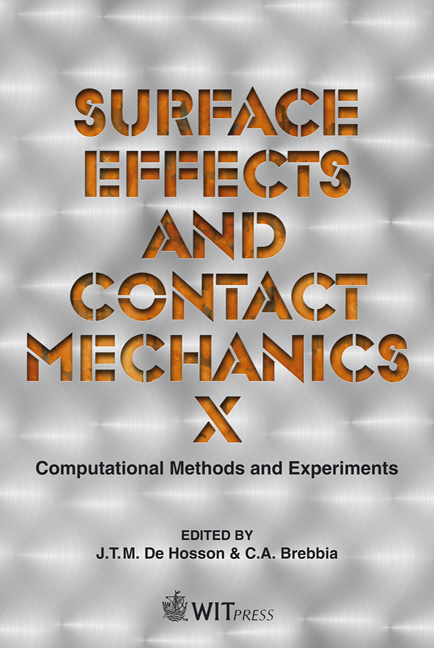Computer Controlled Detonation Spraying: A Spraying Process Upgraded To Advanced Applications
Price
Free (open access)
Transaction
Volume
71
Pages
12
Page Range
265 - 276
Published
2011
Size
5,143 kb
Paper DOI
10.2495/SECM110231
Copyright
WIT Press
Author(s)
I. Smurov & V. Ulianitsky
Abstract
In the present work Computer Controlled Detonation Spraying (CCDS) developed in recent years is described, and the coating formation is studied based on the analysis of: (a) particle acceleration and heating in a gun barrel; (b) particle collision with the substrate and the bond formation; (c) analysis of the coatings composition and microstructure. One of the CCDS’ peculiarities is a pulsed lateral injection of the powder into the barrel at a chosen point. The developed mathematical model permits us to find the particle velocity and temperature as a function of the detonating gaseous mixture composition, the volume of this mixture (barrel filling), the location of the powder injection into the barrel. Theoretical results were verified experimentally using CCD-camerabased diagnostics. CCDS coatings can be deposited on substrates made of metals, ceramics, plastics, even wood and can coat surfaces of complex shapes with an incidence angle up to 45 degrees. For the majority of materials the coating thickness can exceed several millimeters. CCDS gives extended possibilities for deposition of composite and graded coatings using twin powder feeders. Computer control provides real-time adjustment of the spraying conditions for two different powders. Several model composite and multi-layered coatings, including metalmetal, metal-cermet, cermet-ceramic, ceramic-ceramic were deposited and analyzed. Keywords: detonation spraying, protective coatings, fuels for spraying, composites, cermets, multicomponent coating, powder injection, optical diagnostic, splats, particle-in-flight.
Keywords
detonation spraying, protective coatings, fuels for spraying, composites, cermets, multicomponent coating, powder injection, optical diagnostic, splats, particle-in-flight





